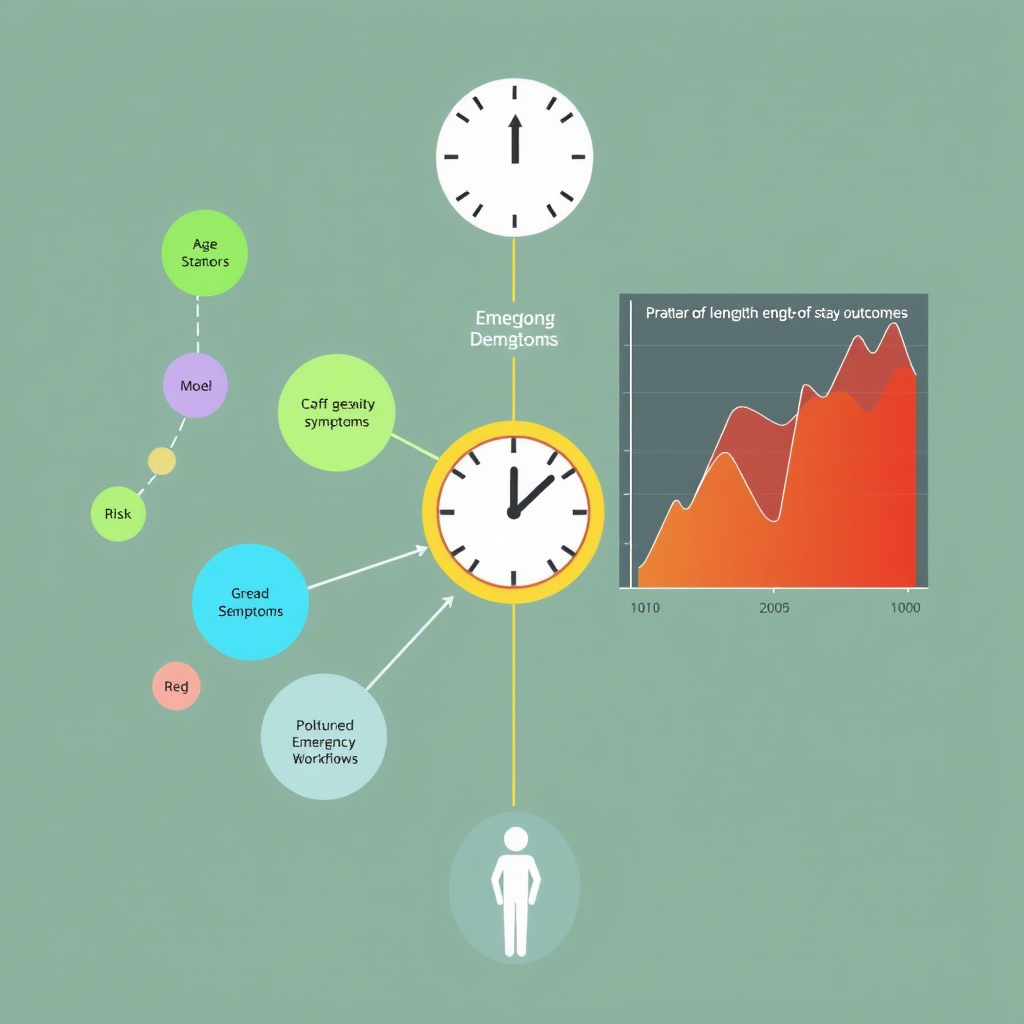The Hourglass Within: Unseen Predictors of Prolonged Emergency Stay in Febrile Pediatric Patients
Mei Huang¹, Li Wei², Xia Liu³, Yun Zhao⁴
Keywords:
Pediatric Emergency, Length of Stay, Febrile Children, ED Flow, Risk PredictionAbstract
Background:
Fever is the most common reason for pediatric emergency visits. While many children are discharged within hours, a subset experiences unexpectedly prolonged stays due to hidden diagnostic or workflow delays. Identifying early predictors of prolonged stay can optimise emergency department (ED) flow and reduce resource strain.
Objective:
To identify clinical, demographic, and operational predictors of prolonged ED length-of-stay (LOS) in febrile pediatric patients and develop a risk stratification model for early intervention.
Methods:
A cross-sectional analytic study was conducted across five emergency departments in China from March 2022 to March 2024. A total of 1,034 febrile children (ages 2 months to 12 years) were included. Prolonged LOS was defined as >6 hours from registration to disposition. Variables assessed included age, triage category, laboratory testing, imaging orders, arrival time, and diagnostic complexity. Multivariable logistic regression and random forest modelling were employed.
Results:
Prolonged LOS occurred in 29.6% of cases. Independent predictors included age <12 months (OR: 1.9, p = 0.004), ordering of ≥3 investigations (OR: 2.6, p < 0.001), off-hours arrival (OR: 1.7, p = 0.008), and presence of atypical symptoms (OR: 2.2, p < 0.001). The final model achieved an AUC of 0.88 (95% CI: 0.85–0.91), with a sensitivity of 83.1% and a specificity of 79.4%. Children with high-risk scores had a median LOS of 8.2 hours vs 3.5 hours in the low-risk group (p < 0.001).
Conclusion:
Prolonged emergency stay in febrile children is not random—it follows identifiable patterns. Early recognition of high-risk profiles using clinical and workflow data may allow proactive triage adjustments and resource deployment. Implementation of predictive dashboards could significantly improve pediatric ED efficiency.
Downloads





